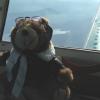I want some kind of aviation performance table.
-
Members Online
- hammdo
- Fly Boomer
- eman1200
- TMass
- patriot3300
- Bolter
- Samir13k
- dkkim73
- Bartman
- LP1
- Rwsavory
- gabez
- AndreiC
- billy hellcat
- Mufflerbearing
- Kirch56H
- M20CPhoenix
- PeytonM
- CCAS
- Mark F
- Marc_B
- hubcap
- EricJ
- Lax291
- mmcdaniel33
- ElkoRandy20J
- Blaze
- Hank
- PT20J
- AME
- DonMuncy
- stevesm20b
- jetdriven
- B.Applewood
- flewmanchu
- EKoS
- warren.huisman
- larryb
- Red Leader


Recommended Posts
Join the conversation
You can post now and register later. If you have an account, sign in now to post with your account.